Description and selection of visors for the chimney pipe
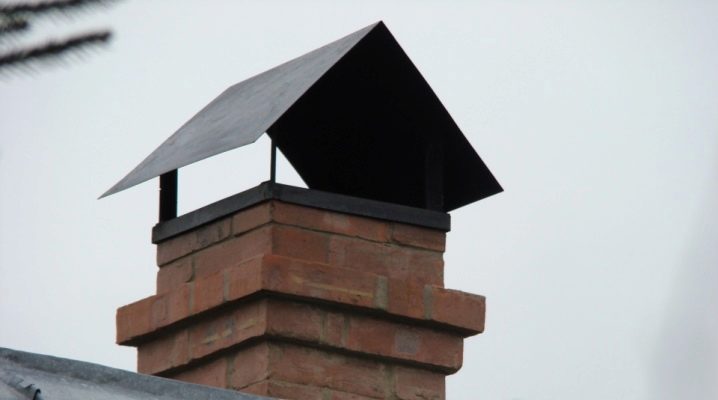
In old stove houses, a large chimney was often seen on the roof. Over time, central heating began to be carried out in dwellings, and there was no longer any need for a stove as such. It was replaced by boilers.
The principle of operation remains the same, but with minor changes and additional details. The cap or visor for the chimney pipe belongs to just such components.
general description
The chimney canopy is an important part of it, which helps the chimney to function correctly, and is also an optional accessory for the facade. The hood performs a number of specific functions. For example, it protects the channel from precipitation or debris, and also improves traction.
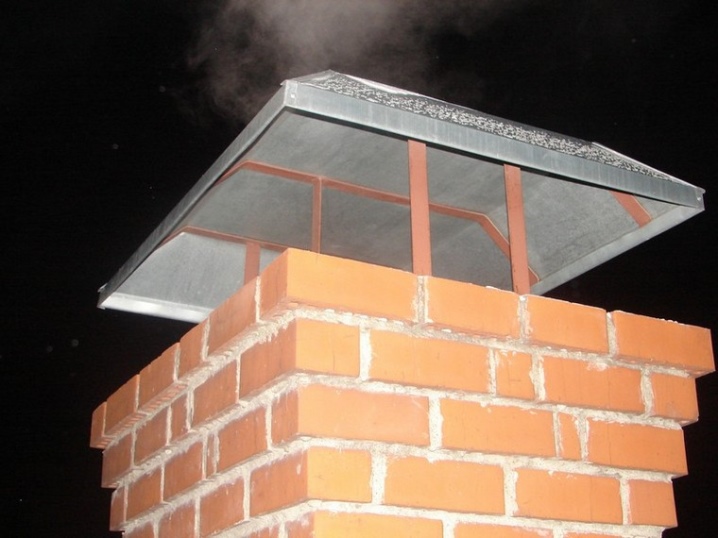
A canopy on a pipe most often resembles an umbrella, fungus or canopy. It is mounted at the very top of the pipe. In addition to the generally accepted name, there is a more official one - a weather vane.
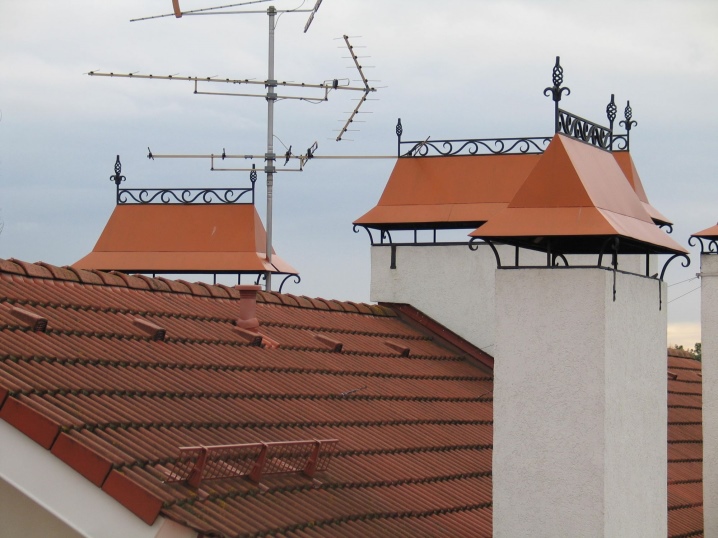
There are a wide variety of pipe umbrellas on the market today. They are classified by function, material, shape and appearance. They are all quite different, but the principle of operation is the same. In order to understand how the hood works, it is necessary to understand its constituent elements.
- Protective visor. This is the very top itself, the canopy. It can be made in various shapes (polyhedron, pyramid, cone) or generally have a flat surface and form a square or parallelepiped. This element directly protects the inside of the pipe from moisture, snow, debris, insects or birds.
- Apron. It is placed around the umbrella and acts as a guard against slanting rain. This is necessary to avoid corrosion on the chimney pipe itself. This is especially true if the pipe is made of iron, not brick. The apron helps to increase the life of the structure as a whole.
- Brackets. They are fasteners. The brackets are presented in the form of oblong plates made of thin but strong metal. Required to connect the hood and apron. Most often, these works require welding, but rivets can also be used in homemade installations.
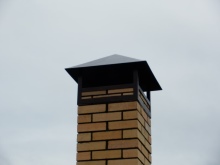

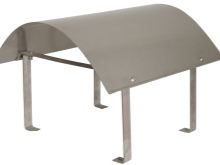
The basic principle of the design is that the necessary air flow enters the pipe, having previously divided into portions on the vane. Then, proceeding from the laws of physics, smoke rushes to the place where fresh air has entered, changing places with it in density. Smoke moves up and air down.
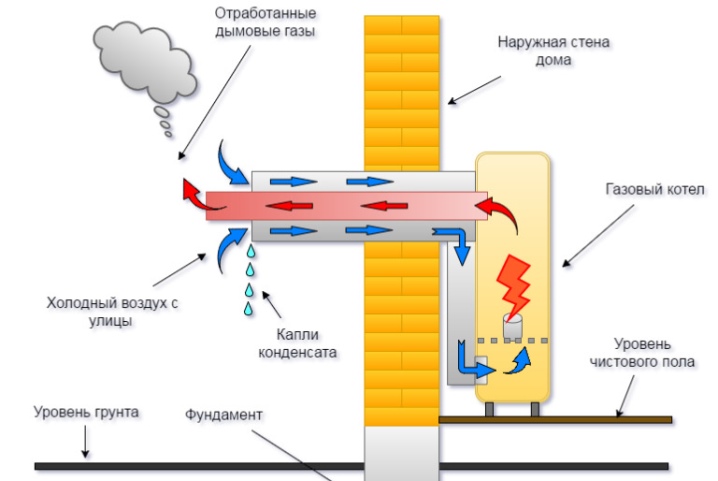
Another of the many functions of the visor is that it protects against accidental fire. In some models, a special mesh is installed, which is called a spark arrester. Such a detail is considered additional and, therefore, is not found in all variants. But it can be purchased separately.
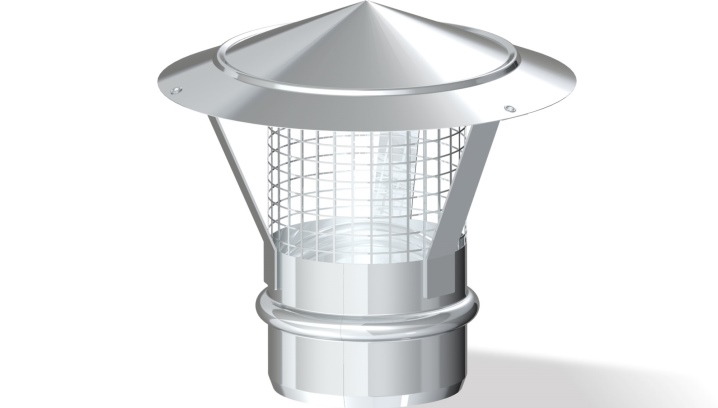
Deflectors with turbines should be part of the vane, as they provide increased traction, despite some design features of the chimney. But most often they are not found in homemade models.
No matter how good the visor is in its operation, there are a number of disadvantages that must be considered when choosing. One of these is considered a hazard due to improper installation of the device. If you mount a chimney or a bell with errors, then the draft may noticeably decrease or disappear altogether. This means that all combustion products will not enter the chimney, but will settle in the paving, which can lead to carbon monoxide poisoning.
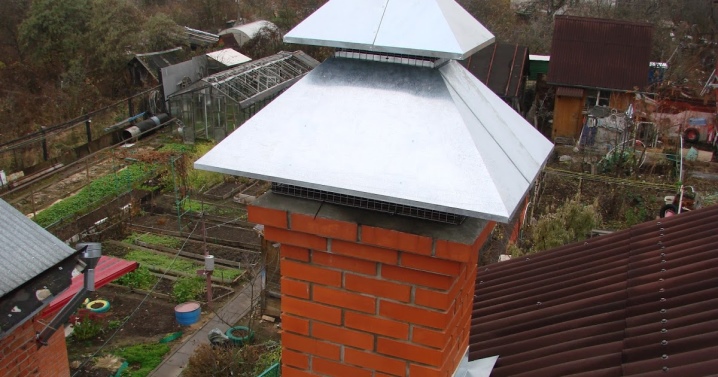
Another drawback that is common among the villagers is that the visor will need to be replaced over time, since plaque and soot remain from the combustion products. And if cheap materials were chosen, then the umbrella will become completely unusable, as it will burn out or deform from the temperature drop.

Species overview
There is a large selection of chimney hoods on the market. You can find models with:
- weather vane;
- spark arrester;
- deflector;
- wind protection.

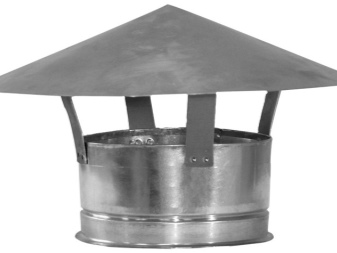
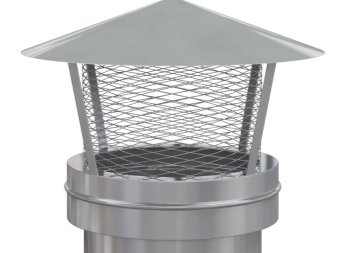
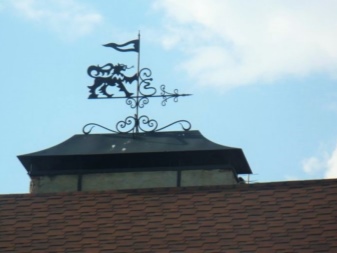
All smoke vane are classified by type and external characteristics. For example, the shape of the chimney is round, rectangular and square.
The weathercocks themselves are subdivided into several more types.
- Standard. These caps have a pyramidal shape. They are made from one solid sheet metal (for small pipes). If the chimney is large, then welding from several such sheets is possible. Attached to the apron with brackets. The most common option on the market, as well as for self-construction.

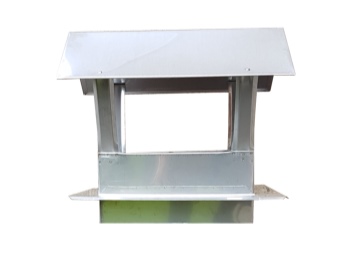
- Quadruple nozzles (they are also called hip roof, since the structure very much resembles the shape of the roof). Ideal for a brick chimney, since this model has a large coverage area and is available for any size range.
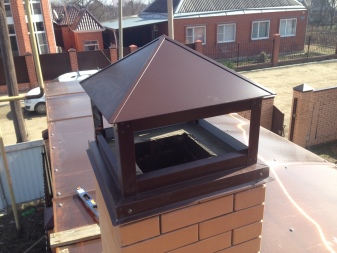
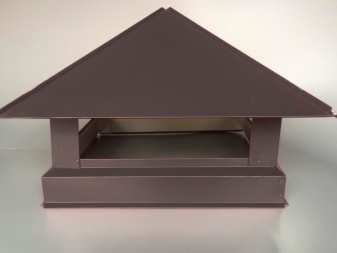
- With a semicircular umbrella. A popular option for European-style houses or loft. Such chimneys are very beautiful and decoratively decorated. But this species is not very effective, and protection against moisture or other precipitation is much lower.
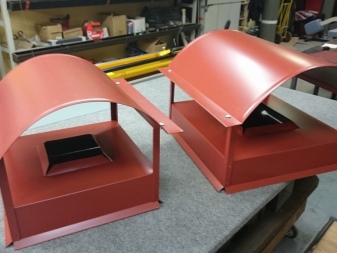
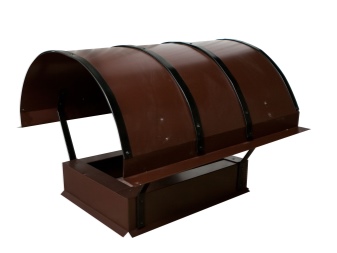
- Flat visors. They differ in that the canopy is made evenly, without corners protruding upward, in the form of a square or rectangle. More often, such installations can be found in houses designed in the style of minimalism. They are suitable for masonry, but it is not recommended to use them simply for iron pipes. Due to the peculiarity of flat canopies, snow does not roll in winter, which gives an additional load on the brackets.
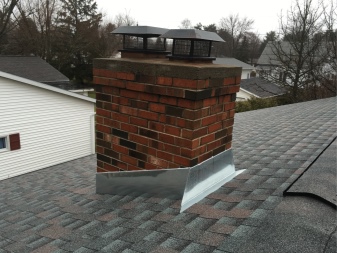
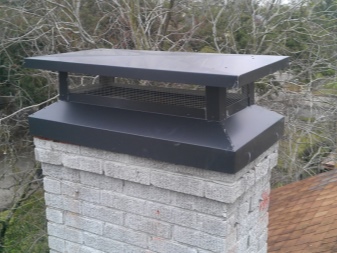
They can deform under strong weight. And also if the weather is very changeable, then ice can form.
- Round with a cone-shaped umbrella. They are used for simple pipes of a similar shape, for example, for a bath. They carry out traction well, but quickly deteriorate. And also do not have a drip.
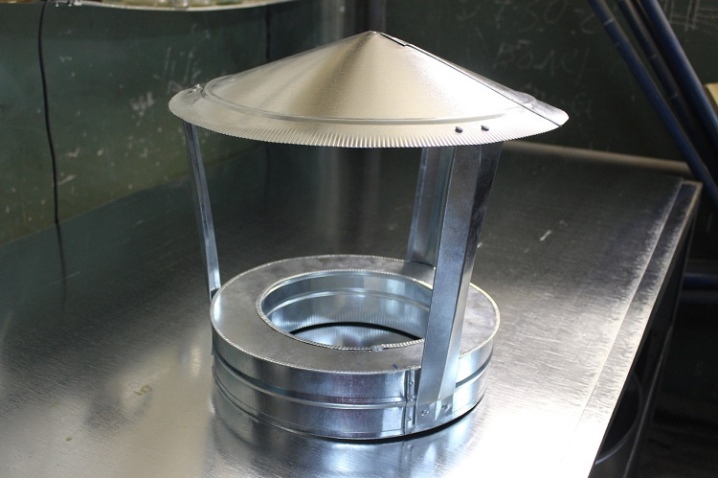
- Single slope are the simplest designs. Used for pitched roofs (flat).
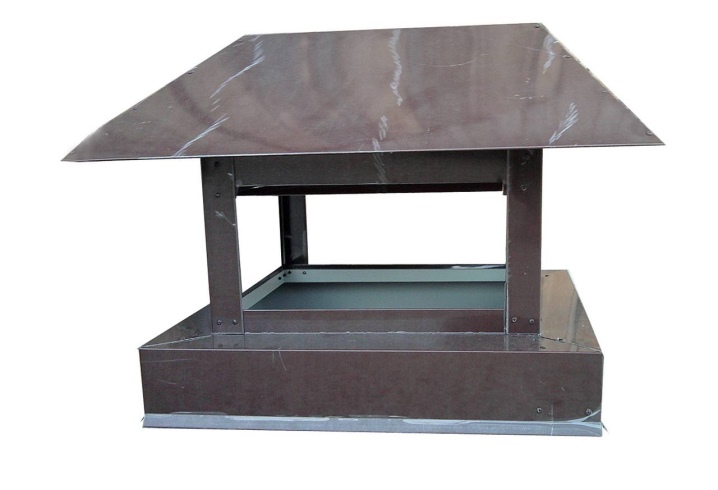
- Gable. Suitable for different roof configurations. They are used for both round and square flues. The disadvantage of this design is that there is no protection against wind blowing and droplets entering the pipe.

Some designs may have additional features, such as an opening cover. This is true for models designed for large chimneys, or those that are connected to a fireplace. The hinged lid greatly simplifies the maintenance of the chimney itself and the visor.
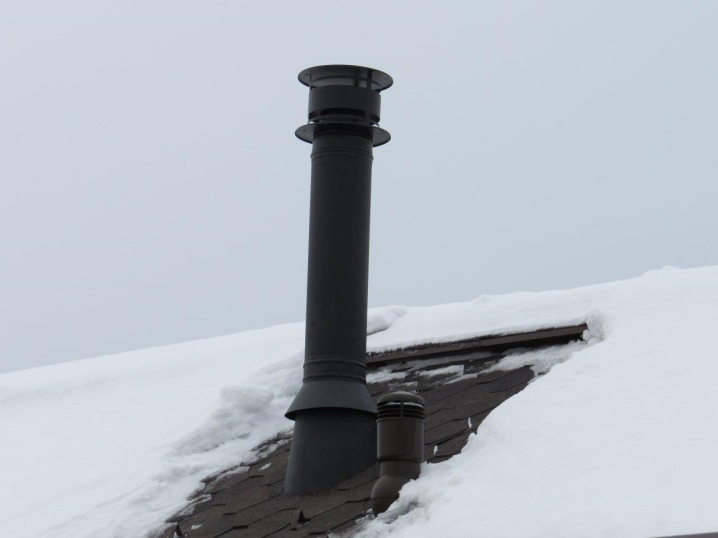
Materials (edit)
Before choosing visors, you must familiarize yourself with the list of materials from which they are made. Each option will be suitable for a particular use. You need to choose the right raw materials that will meet the following characteristics.
- Durability in terms of operation, especially in conditions of temperature differences. And also corrosion resistance must be present.
- Strength. It is usually measured in terms of the possibility of mechanical damage. For example, snow coming off the roof can wrinkle the weather vane.
- Life time. The installation takes into account the place where the visor will rise (home heating system or sauna).
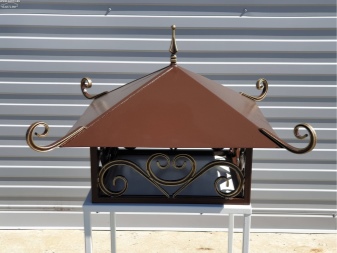
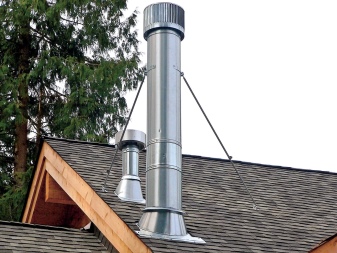
The material most often used to make a hood is a metal profile (copper, stainless steel or galvanized steel).
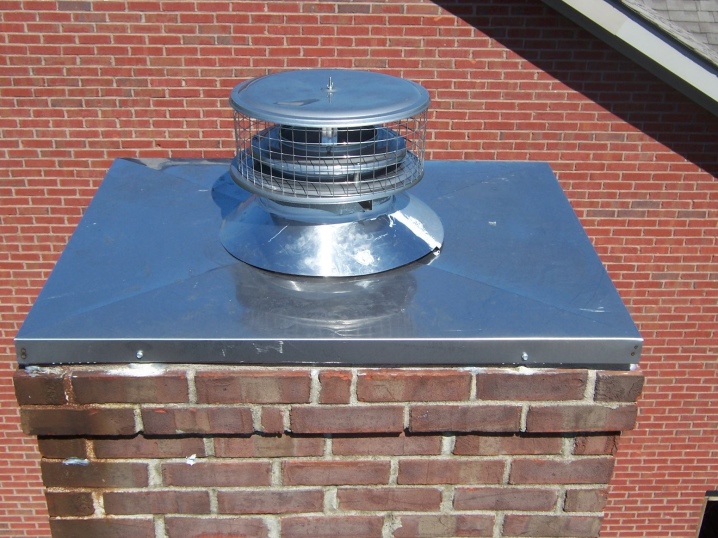
But it is worth noting that galvanized steel is considered the most durable base. It has high strength and corrosion resistance.
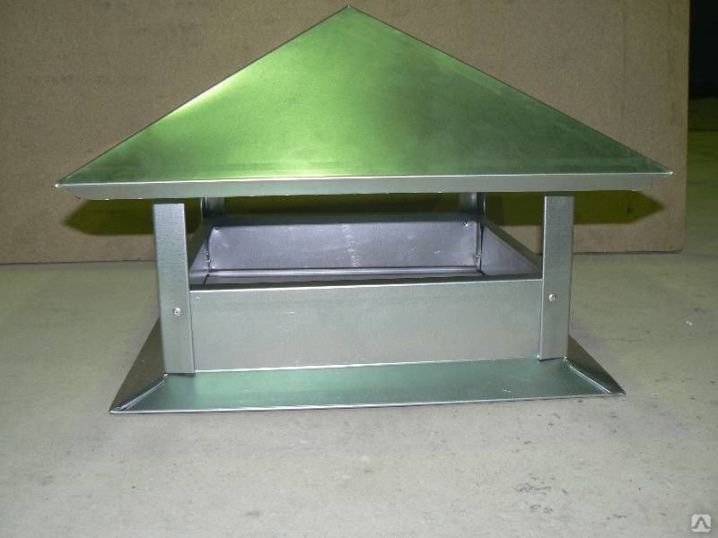
Next comes the stainless steel.Its strength is less, but it adapts well to temperature extremes and has a high resistance to corrosion.
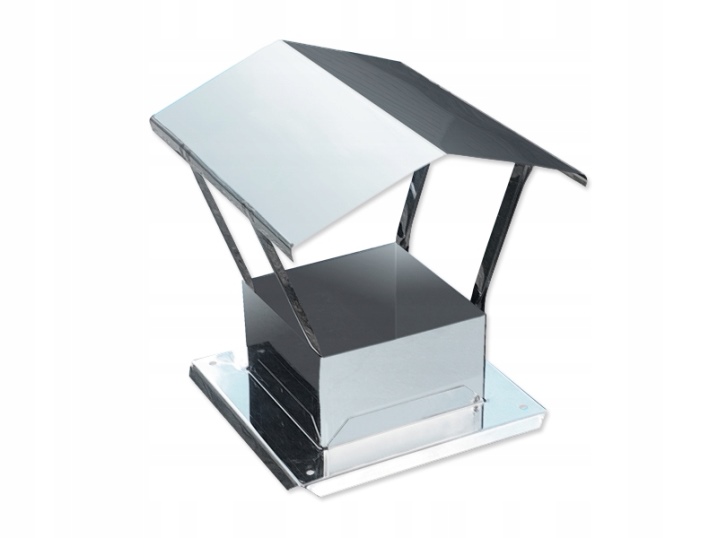
Copper visors are the most expensive of all, because of their beauty and attractive finish.

On all metal profiles, you can make a forged ornament or otherwise decorate the chimney.
Often, for a long service life, the vane is covered with special paint. For example, powder, which seals the surface, helps to avoid deformation and creates an electrical insulating layer. They also use pural, plastisol, polymer paints. They should not be used immediately, but after a few years. Before drying, the liquid will fill microcracks and help level out layers that have undergone some changes.
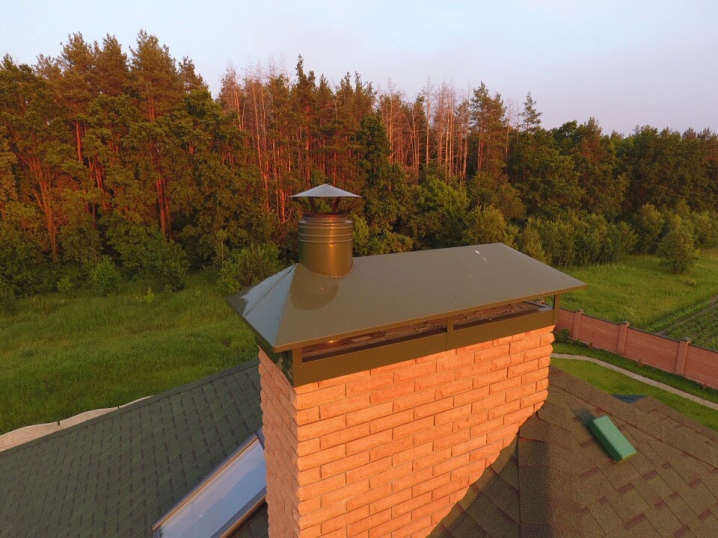
Selection Tips
To choose the right visor, you need to pay attention to some features.
- The umbrella should be 1-1.5 times the size of the pipe or brickwork.
- Before choosing a material, you need to know exactly what will be heated in the oven. This is necessary in order to calculate the approximate temperature of the discharged heat.
- The cover of the vane must be durable and resistant to external factors, corrosion and temperature extremes, and must not be toxic.
- If the structure is supposed to be installed on a boiler in a boiler room, then it is necessary to think over an additional chimney and a drip for moisture. This moment is important if this is not provided in the visor itself.
- In the case of a chimney or fireplace, the vane must be equipped with a second bottom. This will help reduce condensation.
- When installing, it is important to choose the correct angle of inclination of the umbrella so that precipitation does not accumulate. This is especially true in winter, when the snow melts from the heat and forms ice or icicles.
- Height and dimensions will always be calculated based on the amount of emitted smoke, which must leave the stove and not get stuck in the chimney.
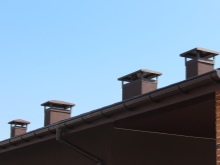
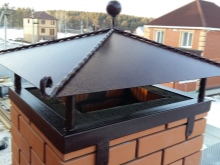
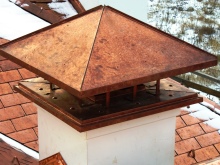
When choosing a weather vane, it is very important to pay attention to the material from which the structure is made, especially if a long service life of the product is required. The stores offer a large selection of models: from the simplest, which are very inexpensive, to exclusive forged products to order.
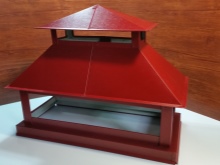
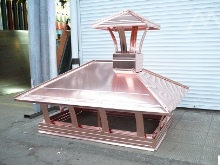
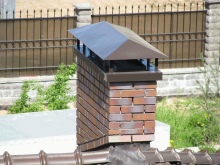
Installation features
Many people install chimney canopies on their own. But there is still a risk of error during installation.
The most common miscalculation is an additional bird net, which is mounted on large chimneys. The main snag is that in winter, condensation forms on this mesh, which does not dry out. And at low temperatures, it freezes on the structure. It turns out that the condensate first creates a small blockage, and then, freezing more and more, it can form a whole plug and prevent air from passing through, preventing traction. And if there is no draft, then all the combustion product goes back into the boiler or furnace. It turns out that it is necessary to additionally clean the weather vane from ice.

The second mistake is non-compliance with the distance and dimensions. These two parameters affect air flow and thrust. If the proportions are observed in the lower direction, then there may be no thrust, if in the larger one, the visor will not protect the pipe from moisture ingress.
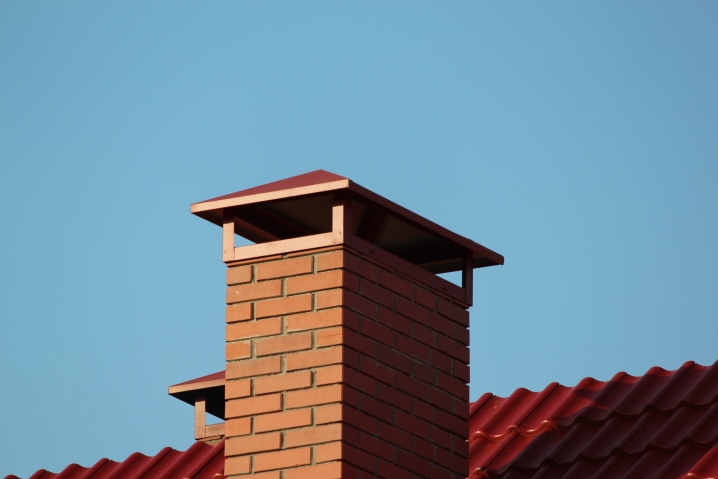
Another popular mistake is that the umbrella is purchased at the last moment or is attached to an already installed pipe. Both of these errors are fraught not only with incorrect installation, but also with a lack of size, which, again, will affect the traction.
Installation is a very laborious process that requires a serious approach. It is necessary to think over all possible options and choose the optimal one for a given chimney. For example, for a heating boiler with an efficiency of more than 85–90%, the classic pyramidal hood cannot be used. It is best to choose a conical weather vane, as ice will not form on it.
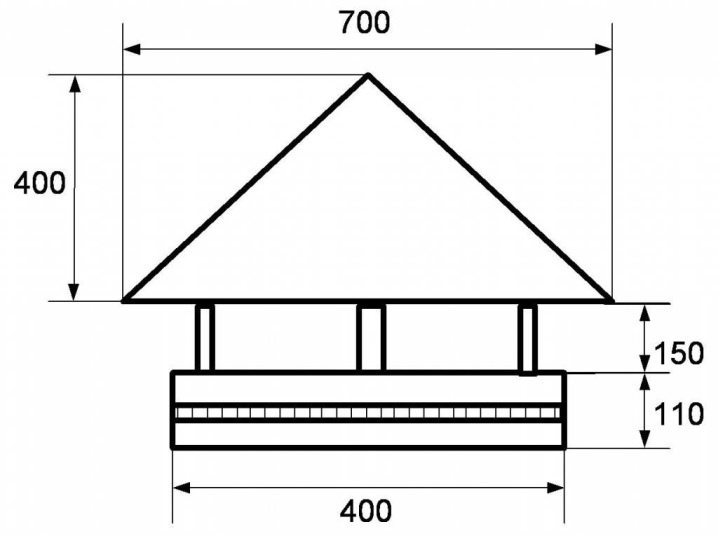
All necessary additional components should be examined, especially if the installation is carried out separately from the entire structure. For example, a cap has burnt out, and it should be replaced - it is necessary to find either the same or approximate in characteristics.
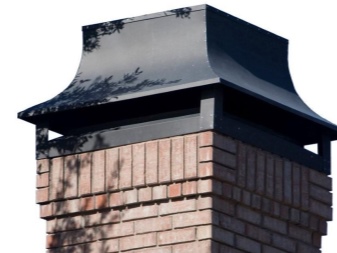

On average, a weather vane lasts from 3 to 5 years. The structure can last up to 10 years if additional reflectors were made. But a thick and dense copper cap lasts from 20-25 years and more.













The comment was sent successfully.